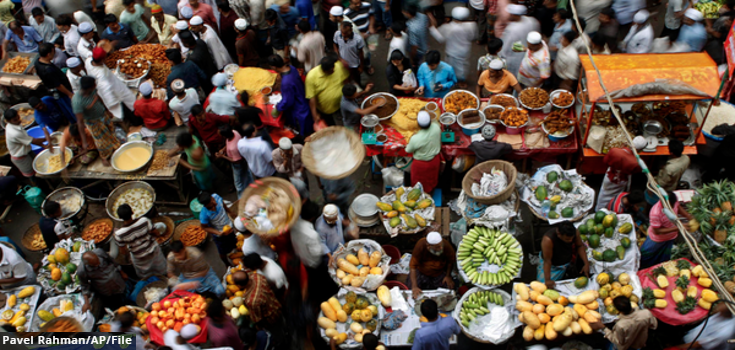Bangladesh Cuts Hunger Rates in Half By Supporting Small Farmers and Women

Once a recipient of food donations from around the world, Bangladesh has now become a model for reducing food hunger. By supporting small farms and women, the country has reduced the number starving citizens significantly.
A recent UN report outlines how Bangladesh, a South Asian country who was once among the poorest in the world, has turned the corner when it comes to eradicating poverty and hunger – a huge step since the country was rampaged with devastating floods in the 1970’s.
Glenn Denning, a professor at Columbia University’s School of International and Public Affairs in New York and a noted expert in development and nutrition, said in response to the UN report:
“These kinds of successes have demonstrated that if you bring certain things together” – he lists economic growth, improved agricultural productivity, a focus on farmers’ market accessibility, and social safety nets for the most vulnerable – “you can bring hunger down.”
Part of allowing small farmers a say in the country’s agricultural health is an enormous part of Bangladesh’s success; this includes women. This has also helped countries like Ethiopia to improve their hunger statistics.
Mahfuza Rahman, a female farmer interviewed for CSISA-Bangladesh states:
“My husband did not initially really trust my ability but now he is very delighted in seeing my efforts and outcomes.”
Read: Russians Prove Small-Scale Organic CAN Feed the World
Once an impoverished land, Bangladesh is now a self-sufficient rice producer, focused on small-farm mechanization, irrigation, and boosting women’s economic power and girls’ education.
In fact, Bangladesh has become so successful, it is now exporting rice to other countries. In the past, the government imported rice to make up for perceived shortfalls in domestic supply, but now the country has bumper crops every year.
The growth has absolutely nothing to do with GM seed, either.
Since the late 1990’s, Bangladesh started growing so much rice, there was a zone of surplus rice from production in Southern areas during monsoon season and spreading to the Northeastern districts during the dry winter months of the Boro crop. This was possible due to simple mechanics.
Investment by farmers in over 200,000 electrically-driven irrigation pumps and tube wells was at the base of this transition to greater food security. Pumps would run without fail in the hot, dry months. Boro rice (winter rice) crops now account for 60% of the rice grown.
It wasn’t Big Ag that made these changes. It was the small farmer who succeeded in Bangladesh despite government monopolies and trade finagling. A country once dependent on others is now more food stable than many nations.

Great news. 🙂